We're now long past the early days when a PS5 compatible SSD was an astronomically expensive item. We've seen prices tumble since the start of the year and you can now double your console's game storage for as little as $150 / £150. With that in mind, we've gathered together all the cheap PS5 SSD upgrade deals so you install more games for less.
The best savings are had if you buy certain SSDs or are willing to do a bit of extra work when installing the drive in your PS5 . Buying one with a heatsink already attached is usually more expensive, but you can add a heatsink yourself to a more affordable PS5 SSD from Samsung, Western Digital or Crucial to save some money.
We've included these and many more of the cheapest PS5 SSD upgrade deals below. You'll find our top picks, as well as the pros and cons of each option so you can choose the right one for you: whether you're looking for the lowest cost option, easiest install or simply the biggest boost to your game storage space.
Not got a console yet? Check out our PS5 restock hub for all the latest updates on where to buy the PS5 from all major retailers. You can also browse all the latest PS5 deals for offers on other accessories and top games.
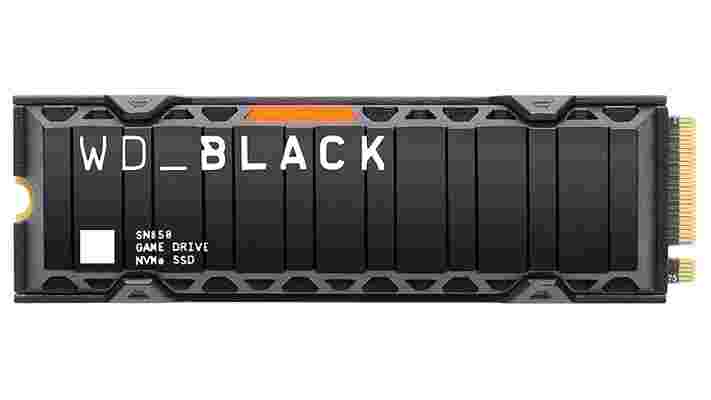
The WD Black SN850 is a great all-in-one solution to your PS5 SSD upgrade needs as it meets all requirements, is available in multiple capacity options and comes with a pre-attached heatsink. This is also the SSD chosen by Mark Cerny, the lead system architect of the PS5, so you know it's a great pick.
As this already has a heatsink you need to pay a little more than the usual cost of an SSD. However, the WD Black SN850 retails for around $200 / £150, so it's usually only about $30/£20 more than non-heatsink options. That's not a bad price to pay to save you the effort of finding a compatible heatsink and installing it yourself. Plus, the price of this drive has fallen so significantly over recent months that we think it's now the best deal anyway.
Because of this, though, it's an extremely popular item and can be difficult to find in stock at some stores. If it's available, this should be one of your first options when it comes to buying a PS5 SSD upgrade. Western Digital drives are regularly on sale, too, so you should be able to get an even better bargain at some point.
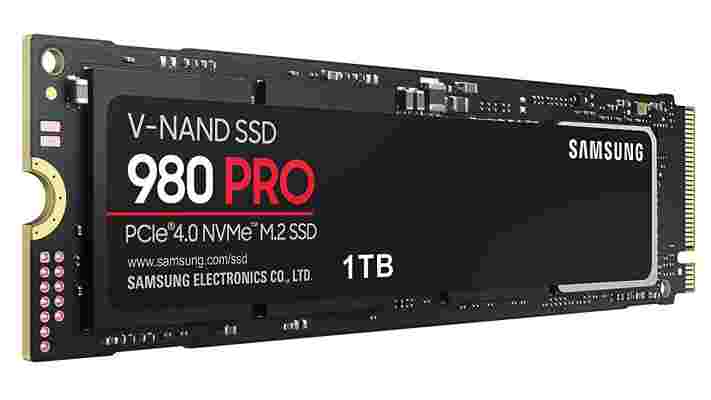
When it comes to quality and performance in SSDs, Samsung is usually at the top of the pile. The Samsung 980 Pro is no different and is a great pick if you're after one of the best PS5 SSD storage upgrades. It's fast enough, has a number of capacity options and comes from what many would consider the best name in the business.
More importantly, the Samsung 980 Pro has also received substantial discounts in the past from its usual $190/£180 price point. Last Amazon Prime Day, for example, it dropped by over 20%. It's definitely one to keep an eye on during any future sales if you want to snag a cheap PS5 SSD.
The only downside is you'll need to buy your own heatsink ( more on that here ) to attach to the drive which will drive up the cost a little – a requirement in order to keep the SSD cool in your PS5. Still, it's an inexpensive and easy process – and could save you some cash over the Western Digital drive above – if you feel comfortable doing it.
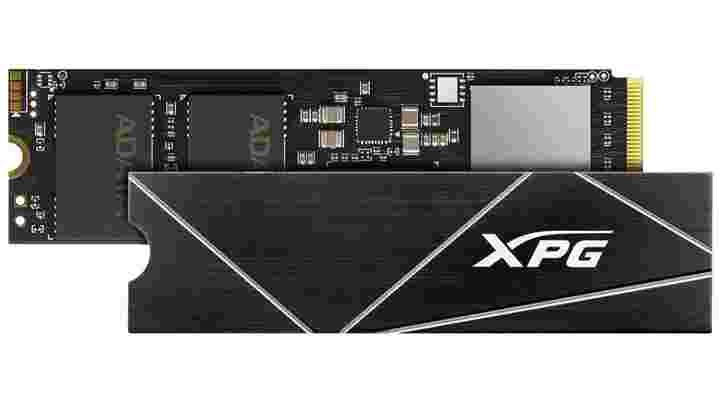
The XPG Gammix S70 Blade is one of the cheapest PS5 SSDs we've seen that comes with a heatsink. You'd usually have to part with somewhere around $50/£40 less compared to the WD Black SN850, though that gap has narrowed over recent months as the technology gets cheaper. Either way, this SSD is usually about the same price as the Samsung 980 Pro (which doesn't include a heatsink).
One potential downside is that it's only available in 1TB and 2TB capacities. If your PS5 storage needs are much lighter then you should be able to save a bit more cash by picking up a 500GB SSD from a different manufacturer. For the larger sizes, though, the XPG Gammix S70 Blade is one of the cheapest options available with an included heatsink.
Naturally, this has made the XPG Gammix S70 Blade a very popular item during this rush to get a PS5 SSD so stock can be hard to find in some regions. Some stores have also seen this as an opportunity to bump the price up a little so be careful you aren't paying more than is necessary. We suggest looking out for a voucher deal on this specific model at Amazon as one seems to be available every couple of weeks.
The latest Crucial P5 Plus was released at a very opportune time to take advantage of the demand for PS5 compatible SSD upgrades. Its specs line up perfectly with what's needed to function as additional PS5 storage, while also being one of the more affordable Gen 4 NVMe M.2 SSDs available.
Its regular price is about $20/£20 less than the Samsung 980 Pro, but it is a slower drive. Even so, the Crucial P5 Plus is still well above the 5500Mb/s read speed requirement listed by Sony, so it shouldn't be massively noticeable when it comes to playing PS5 games.
Even better, it's worth noting that it's even less than similar drives without any discounts and regular under $100 / £100 for a 1TB version. You may see even larger price cuts during the next big Prime Day or Black Friday sale that could make the P5 Plus even better value. Just remember, you'll need to add the cost of a heatsink on top – that's no more than $10/£10, though.
The Seagate Firecuda 530 has been popular as it's the fastest PS5 SSD upgrade currently available, with read speeds of up to 7300 MB/s. That comes at a price, though, as a 1TB version of this drive has been $50/£50 more than that budget XPG Gammix Blade.
Theoretically, this speed boost could allow quicker load times when playing PS5 games and faster transfer times if you move them between multiple storage options. However, there's a question as to whether the PS5 can actually take full advantage of that speed, so we wouldn't necessarily suggest you rush to buy this drive on that potential benefit alone.
Elsewhere, it's one of the few drives that offer a 4TB capacity option if you really want all that space for more PS5 games. Just know you have to pay nearly $1000/£1000 for an SSD of that size – that's basically twice the price of a PS5 console itself! We feel it isn't really worth it at this stage.
If you really want the best PS5 SSD upgrade from a technical perspective then the Seagate Firecuda 530 is the one to go for. Still, there are much cheaper options available that will do the job just as well – even with included heatsinks. It's one to follow, though, as the competition from other manufacturers could drive the price lower over the coming months.
What size PS5 SSD do I need?
We recommend getting a 1TB SSD in order to get the best value for money for a significant boost to your PS5 game storage. With an SSD of this size, you’ll be able to install between 15-20 major PS5 game releases, though that could be less if they are all particularly large 100GB+ titles such as Call of Duty: Warzone, Destiny 2 or Hitman 3. If your library is more varied, you’ll get dozens of smaller titles on it with no issue.
For anyone whose gaming habits are a little lighter, if you’re on a tighter budget, or you don’t mind uninstalling excess games every so often, a 500GB SSD is a reasonable choice. That’ll give you room for about 5-10 AAA games or many indie hits.
You could plump for a 2TB SSD if you really want to forget about all future PS5 storage woes for some time to come. You’re approaching the cost of the console again at this point and that seems a little ridiculous. Of course, the PS5 does support SSDs up to 4TB. You really don’t need that amount of space and they cost almost $1000/£1000 so we don’t think it’s a wise investment right now.
Which heatsinks are compatible with PS5?
The majority of third-party heatsinks that match the size requirements of the SSD and the PS5’s internal storage expansion drive will work just fine. Those measurements are really the key thing to look out for as a few millimetres in the wrong place could mean the SSD won’t fit in your PS5.
To make things easy, we’ve listed a few compatible options that you can take your pick from below. Once you’ve got everything you need we’ll take you through how to install your PS5 internal SSD upgrade too. Luckily, it’s a fairly straightforward process.
Now you've got all that room, why not fill it up with all the latest cheap PS5 game deals on the shelves or get a cheap PS Plus membership and grab all those free games on the service? You might also want to check out the best PS5 external hard drives .
Foundation season 2 gets a first look image – and new cast members
Major spoilers follow for Foundation season 1. You have been warned.
The first official image for Foundation season 2 has been revealed – and it teases a tense reunion between two of the show's most prominent characters.
Unveiled as part of an Apple TV Plus press release about the sci-fi show's next instalment, the official still reveals that Lee Pace's Brother Day is set to lock verbal horns with Jared Harris' Hari Seldon once again. Well, the AI construct of Seldon's consciousness anyway, given that the psychohistorian died in the series' second episode.
Take a look at the first image from Foundation season 2 below:
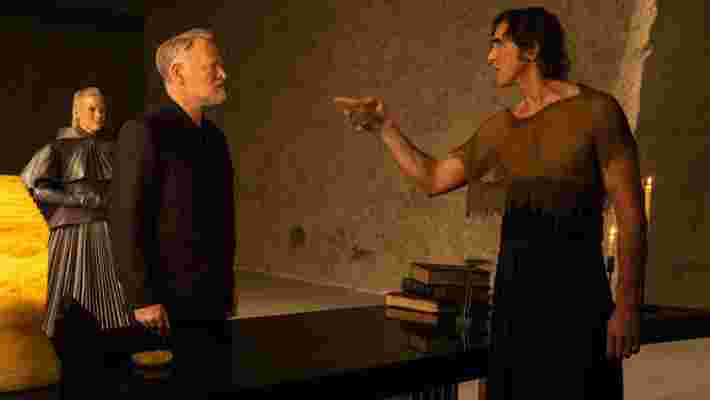
The first photograph from the season 2 set isn't the only announcement concerning Foundation's TV adaptation, though. Apple has also revealed 10 new cast members for the show's upcoming season, including two characters who are integral to the series' overall plot.
Dimitri Leonidas (Centurion, Riviera) has been cast as Hober Mallow, a master trader who is "summoned against his will to serve a higher, selfless cause". Meanwhile, Ben Daniels (The Exorcist, Jupiter's Legacy) will portray General Bel Riose, the Galactic Empire's greatest general who poses a major threat to The Foundation's survival.
Check out the full list of Foundation season 2's new cast members below:
Curiously, Poly Verisof and The Warlord of Kalgan are the only other pre-existing characters – alongside Bel Riose and Hober Mallow – in Isaac Asimov's beloved novel series. The other six, then, are likely to be original characters created for the TV series.
Foundation season 2 is currently in production under the watchful eye of showrunner David S. Goyer. No official release date has been announced for the Apple TV Plus show 's return yet.
Analysis: Fate of the duels

Understandably, there's not much we can glean from season 2's first-ever image. Judging by the fact that Brother Day is pointing an accusatory finger at his adversary's AI construst, however, it's clear that the conversation between them will be a strained and stormy affair.
Interestingly, the pair haven't traded intellectual insults since Foundation's premiere. Fans of the series will remember that, in the very first episode, Brother Day exiled Seldon and his band of followers to the planet Terminus. Day did so because Seldon's psychohistory experiments theorized that the Galactic Empire would fall and endure 30,000 years of hardship unless humanity rapidly changed course. As such, Seldon's thesis was deemed blasphemous and he, along with Lou Llobell's Gaal Dornick and countless others, were sent away to a planet on the galaxy's periphery.
This season 2 image, then, marks the first time that Day and Seldon will have interacted since the TV show's premiere. Expect sparks to fly and thinly-veiled barbs to be traded when the duo reunite.
I can’t stop watching Age of Empires 4’s cutscenes
Age of Empires 4 is one of the best documentaries I’ve seen in a long time – which is really saying something, given that it’s actually a real-time strategy game. It’s a game that elegantly builds on its predecessors’ fluid base-building and frenzied unit management to create a refined tactical experience that’s more approachable to modern audiences.
At least, that’s what I’m told. I wouldn’t know. I’ve spent more time watching Age of Empires 4 ’s cutscenes than thinking too strenuously about its gameplay. Even now that I’m a good chunk of the way through its third single-player campaign, it’s not the battlefield that’s made the biggest impression on me, but the game’s pre-match cinematics.
These aren’t your average in-game cutscenes, but bite-sized documentaries. Head into a battle, and you’ll get the lowdown on who the main players are, what political machinations sparked the conflict, and how it served as a pivotal moment in the history of that country or continent. They’re short history lessons that delve into the timeline and myths behind the skirmish you’re about to enter.
Cinematic flair
They’re also absolutely brilliant. Produced with all the hallmarks of the television documentaries you might have watched on the History Channel 15 years ago – and at a significantly better production quality – the shorts give some modern television documentaries a run for their money. Sweeping aerial camera shots show you historical locations as they exist today, while superimposed CGI armies skirmish across fields and castles. A narrator explains the causes of the conflict, as well as the ramifications of the battle you’re about to fight.
And that’s only the mandatory viewing. After completing each mission, you’ll unlock bonus videos that explore the minutiae of each historical period. These go into immense detail, with expert presenters and academic historians walking you through the fundamentals of life and warfare in the Middle Ages.
I can confidently say I now know a thing or two about how medieval paint was created using iron oxide, eggs, and tree sap. I can list a few ways in which Mongol heavy cavalry came to dominate the battlefield. Ask me what I know about crossbows, armor, or Guédelon Castle (an architectural history project currently under construction in France), and I can probably think of something intelligent to say about them, as well.
The quality of the videos is impressive, but so is their teaching value. Like every English schoolchild, I learned about the Norman conquest at length, but did I retain much of that information? Only a little bit about motte-and-bailey castles. Ask me what I’ve learned about The Anarchy from playing Age of Empires 4, though, and I could whip up an essay that would have any secondary school student trembling at the sheer scope of my historical knowledge (admittedly, not a particularly impressive feat).
Historical hit
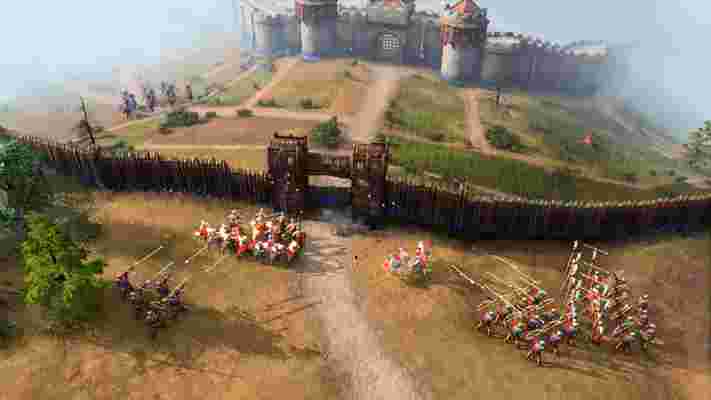
I can’t get enough of it. After only a handful of hours in Age of Empires 4, my love of documentaries has been reignited. I’ve caught the learning bug, and have sunk my teeth into every history doc I can get my hands on. The Roman Empire, the Russian Revolution, the seemingly endless mountain of World War 2 documentaries that are released year on year – the time period doesn’t matter; I’ve breezed through them all.
And I’m still smitten with Age of Empires 4. The game hands you just as many history lessons as you can take. If you’re like me, you’ll watch every bonus video as soon as they’re unlocked and keep returning for more. I’ve watched several shorts twice over, waiting in excited anticipation at what historical deep dive I’ll unlock next. But if you’d rather skip the pedagogy, there’s nothing to prevent you from side-stepping the optional shorts and heading straight into a skirmish.
That means you’re unlikely to suffer from history fatigue. The mini-documentaries – which are usually a couple of minutes long – are fed to you drip by drip, punctuated by each main mission. They’re less of an expository device than they are a reward for your military conquests: just defeated the Hungarian forces at the Battle of Mohi? Check out this explainer on the unmatched firepower of the multibow crossbow, as a treat.
But they’re also a clever way of baking history into the game while keeping it separate from Age of Empires 4’s core design. I love learning about the battles of old as much as the next person, but I’m not so fussed about historical accuracy that I want it to dictate a game’s fundamental mechanics and features. Age of Empires 4 is no simulator, and only recreates battles in an abstract sense. By handing you these videos to enjoy outside of the main game, the game conveys its reverence for history while letting you command colorful, cartoonish knights across heavily stylized battlefields.
Leave unwavering historical authenticity to the likes of Hearts of Iron and Europa Universalis; Age of Empires takes a gameplay-first approach.
Back for more
This isn’t the first time a studio has tried to bridge the gap between documentaries and video games. The strategy genre is no stranger to implicitly, and explicitly, teaching players the history behind the games they’re playing. Even Age of Empires 2 – which came out in 1999 – included an in-depth timeline of each of its civilizations, handing you an encyclopedia of the factions and figures under your command.
It’s all part and parcel of the genre’s mission to share its excitement for the history that inspires its games – to not only recreate giant battles of old but to spark players’ interest in them.
And Age of Empires 4 does that to incredible effect. I could say its well-balanced gameplay, its varied mission types, or my desire for a sense of completion have kept me coming back for more. That would be missing the bigger picture. I keep returning to watch the game’s brilliant documentary-style cutscenes. That’s no small feat for a strategy game.